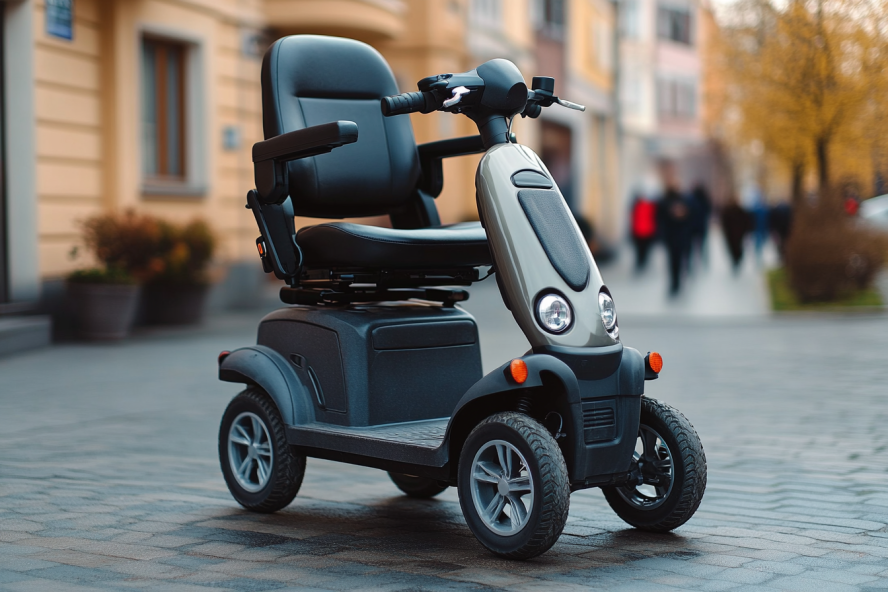Mobile Stair Lifts Without Installation: Safe, Simple, and Ready to Use
For many people with limited mobility, stairs can be a daily challenge. Whether due to age, injury, or a health condition, navigating up and down steps isn’t always safe — or even possible. That’s where mobile stair lifts without installation come in.

What Is a Mobile Stair Lift?
A mobile stair lift is a portable mobility device designed to help individuals safely navigate stairs without permanent modifications to the staircase. Unlike traditional stair lifts that mount to the wall or staircase with a fixed track system, mobile stair lifts are freestanding units that can be moved from one location to another. They typically feature a seat or platform mounted on a motorized chassis with specialized treads or wheels that can climb stairs. The key distinction is that these devices require no installation, drilling, or permanent fixtures, making them ideal for temporary use, rental properties, or situations where traditional stair lifts aren’t practical.
Most mobile stair lifts are operated by a caregiver or assistant who guides the device up or down the stairs while the user remains seated. Some advanced models can be operated by the user themselves, offering greater independence. These versatile mobility aids come in various designs to accommodate different stair configurations and user needs.
How Does a Mobile Stair Lift Work?
Mobile stair lifts operate on a relatively straightforward principle, though the technology behind them is quite sophisticated. Most models use a battery-powered motor system that drives specialized rubber tracks or climbing mechanisms. These components allow the unit to safely ascend or descend stairs while maintaining stability.
When in use, the person needing assistance sits on the lift’s seat, secures any safety belts or harnesses, and then either they or an assistant operates the controls. The device then moves up or down the staircase at a controlled pace. Many models feature safety sensors that detect obstacles and automatically stop the device if something blocks its path.
The climbing mechanism typically works through one of several methods:
-
Tracked systems that use rubber treads to grip the stairs
-
Wheel clusters that rotate to maintain level seating while climbing
-
Step-by-step climbing mechanisms that lift and advance sequentially
Most mobile stair lifts run on rechargeable batteries that provide enough power for multiple trips before requiring recharging, making them convenient for daily use without constant access to electrical outlets.
What Are the Key Benefits of Mobile Stair Lifts?
Mobile stair lifts offer numerous advantages over traditional fixed stair lifts, particularly for certain users and situations. Their flexibility and convenience make them attractive options for many households.
The most significant benefit is the lack of installation requirements. Without the need for structural modifications, mobile stair lifts can be used immediately upon delivery and require no specialized technical skills to set up. This eliminates installation costs and avoids potential damage to the property, which is especially valuable for renters or those in temporary living situations.
Portability represents another major advantage. These devices can be transported between different locations—whether that means moving between homes or using the same lift on different staircases within the same building. Some models can be disassembled or folded for easier transport in a vehicle.
Cost-effectiveness is another compelling benefit. Without installation expenses and with the ability to resell when no longer needed, mobile stair lifts often present a more economical solution for temporary mobility challenges. They’re also ideal for visitors with mobility issues who may only need stair assistance occasionally.
Who Should Consider Using a Mobile Stair Lift?
Mobile stair lifts are particularly well-suited for several specific scenarios and user groups. People recovering from surgery or injury who need temporary mobility assistance find these devices ideal, as they provide a short-term solution without permanent home modifications. Individuals with progressive conditions might start with a mobile stair lift before determining if a permanent installation is necessary.
Caregivers who assist multiple clients in different locations benefit greatly from the portable nature of these devices. Similarly, families with elderly relatives who visit frequently but don’t live in the home full-time can deploy the mobile lift only when needed.
Renters face particular challenges with mobility modifications since permanent installations may violate lease agreements or require landlord approval. Mobile stair lifts circumvent these issues entirely. Those in listed buildings or properties with restrictions on structural changes also find these non-permanent solutions invaluable.
Anyone facing budget constraints might prefer mobile options, as the total cost is often lower than installed systems when considering installation and removal expenses. Additionally, those who anticipate moving homes in the near future can take their mobility solution with them rather than investing in a fixed system they would leave behind.
What Safety Features Should You Look For?
Safety is paramount when selecting any mobility device, particularly one that navigates stairs. When evaluating mobile stair lifts, several key safety features deserve careful consideration.
Stable base design is critical—look for models with a wide, low center of gravity that minimizes tipping risk. Emergency stop buttons should be prominently positioned and easily accessible to both the user and assistant. Safety belts or harnesses are essential to secure the passenger during movement, preventing falls if the lift stops suddenly.
Anti-slip surfaces on the seat and footrest help maintain passenger stability, while speed control mechanisms ensure the lift moves at a safe, controlled pace. Battery level indicators are important to prevent power loss mid-journey, which could leave someone stranded on the stairs.
Some premium models include obstacle detection sensors that automatically stop the lift if something blocks its path. Hand grips positioned for both user and assistant provide additional stability and control during operation.
Lastly, weight capacity ratings are crucial safety considerations—always select a model rated well above the intended user’s weight to maintain a proper safety margin.
What Are the Costs and Options for Mobile Stair Lifts?
Mobile stair lifts vary significantly in price depending on their features, weight capacity, and technology. Generally, these devices represent a smaller investment than permanently installed stair lifts, with the added benefit of no installation costs.
| Mobile Stair Lift Model | Provider | Weight Capacity | Key Features | Cost Estimation |
|---|---|---|---|---|
| Scalamobil S35 | Invacare | 140 kg | Climbs straight or curved stairs, detachable from wheelchair | £3,500 - £4,800 |
| C-Max U1 | AAT | 120 kg | Universal design fits most wheelchairs, single-button operation | £2,900 - £3,700 |
| PT-S All-Terrain | Roby | 150 kg | Handles indoor/outdoor stairs, adjustable speed | £4,200 - £5,500 |
| LG2020 | Liftkar | 160 kg | Built-in seat, folds for transport | £3,800 - £4,600 |
| Joey Lift | Handicare | 120 kg | Compact design, minimal storage space | £2,500 - £3,200 |
Prices, rates, or cost estimates mentioned in this article are based on the latest available information but may change over time. Independent research is advised before making financial decisions.
Beyond the purchase price, consider ongoing maintenance costs, which are typically minimal compared to fixed installations. Many providers offer rental options, which can be cost-effective for short-term needs. Most manufacturers provide warranties ranging from 1-3 years, with extended coverage available for an additional fee.
Conclusion
Mobile stair lifts without installation requirements offer a practical, flexible solution for those facing mobility challenges. With their immediate readiness, portability, and range of safety features, these devices provide independence and accessibility without the commitment of permanent home modifications. Whether needed for temporary recovery, occasional visitors, or as a long-term solution in rental properties, mobile stair lifts bridge the accessibility gap with minimal hassle and maximum convenience. By understanding what features to look for and which options best match specific needs, users can find the ideal solution to maintain their freedom of movement throughout their homes.
This article is for informational purposes only and should not be considered medical advice. Please consult a qualified healthcare professional for personalized guidance and treatment.




